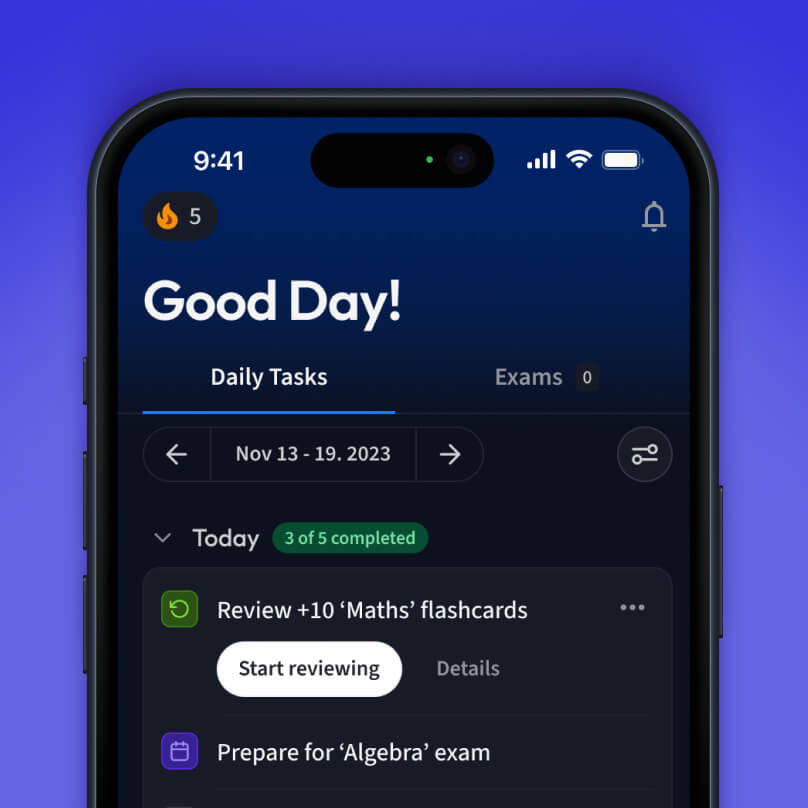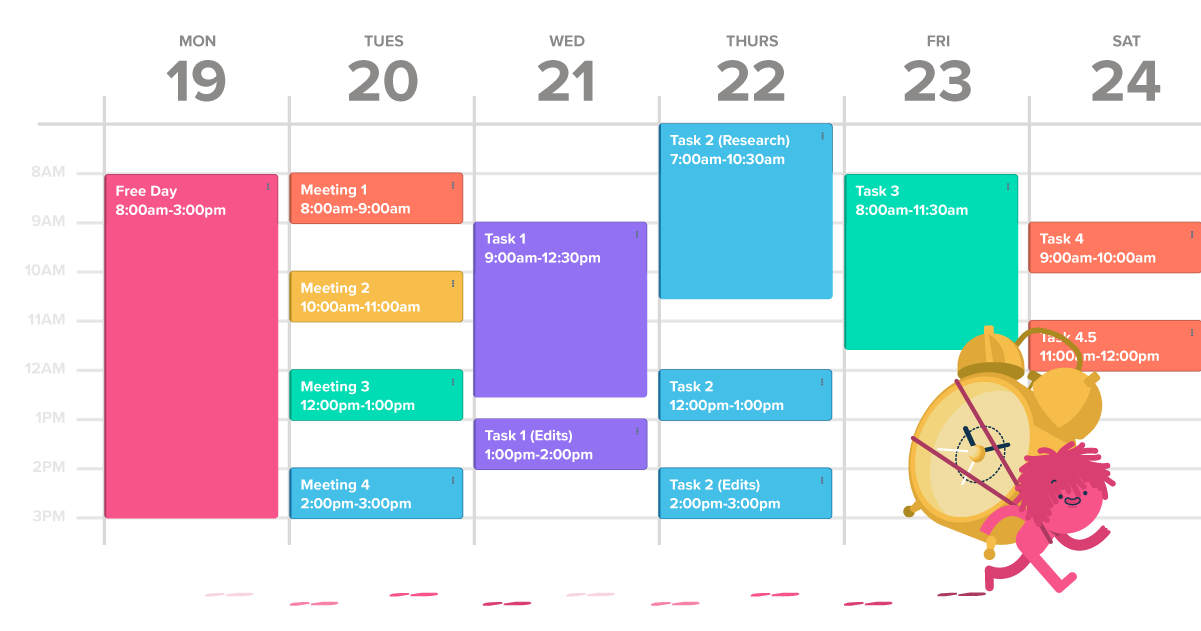What is the Spaced Repetition Method?
The spaced repetition method is a learning technique that involves reviewing material at gradually increasing intervals over time. The core principle is that you review information just before you’re likely to forget it. By strategically spacing out your study sessions, you reinforce your memory and make it easier to retain information in the long term.
The Science of Spaced Repetition
The science of spaced repetition is rooted in Hermann Ebbinghaus’s Forgetting Curve, which demonstrates how rapidly we forget information after learning it. Without review, a significant portion of newly learned material can be forgotten within days or even hours. Spaced repetition combats this by reintroducing information at specific points in time, reinforcing neural connections and slowing down the forgetting process.
How to Do Spaced Repetition
Understanding how to do spaced repetition effectively is key to maximising its benefits. The process involves:
- Initial Learning: Begin by thoroughly understanding or memorising a piece of information.
- First Review: Review the material after a short interval, typically within a day or two.
- Subsequent Reviews: Increase the intervals between each review session. For example, after the second review, wait four days for the next, then a week, two weeks, and so on.
The goal is to find the right balance between reviewing too frequently (which can waste time) and waiting too long (which can result in forgetting).
Best Spaced Repetition Intervals
Choosing the best spaced repetition intervals depends on individual learning needs and the complexity of the material. However, a common guideline is as follows:
- First review: 1 day after initial learning
- Second review: 3-4 days later
- Third review: 7-10 days later
- Fourth review: 2-3 weeks later
- Fifth review: 1-2 months later
These intervals can be adjusted based on how well you remember the material. Many spaced repetition apps automatically calculate and suggest optimal review times based on your performance.

Interleaving
Interleaving is another technique that can enhance the effectiveness of spaced repetition. Instead of studying the same topic repeatedly in a session, interleaving involves mixing different topics or subjects within your study sessions. This encourages your brain to distinguish between similar concepts and improves overall comprehension. Combining interleaving with spaced repetition can dramatically boost your ability to apply knowledge in various contexts.
Customising Spaced Repetition for Subjects
Here’s a table that shows how you can customize spaced repetition for different types of subjects or materials. Make sure to consider the varying complexity and recall needs for different learning tasks:
| Subject/Material Type | Recommended Spacing Strategy | Customization Tips | Example |
|---|---|---|---|
| Language Learning | Frequent, shorter intervals for vocabulary and grammar initially, with longer intervals as mastery improves. | Use flashcards with native language translation on one side and the target language on the other. Include audio for pronunciation. | Review vocabulary after 1 day, 3 days, 7 days, 2 weeks. |
| Mathematics | Longer intervals with more focus on problem-solving exercises. Practice complex problems frequently in the beginning, then gradually increase spacing. | Focus on step-by-step solutions rather than simple recall. Integrate problem-solving flashcards or adaptive learning tools. | Review concepts after 2 days, 5 days, 10 days, 1 month. |
| Science (e.g., Biology) | Use mixed intervals for factual recall and application-based learning. For factual info (e.g., cell structures), shorter intervals; for processes, longer intervals. | Incorporate diagrams and labels for factual content and practice drawing key structures. Use more frequent reviews for processes. | Review terminology after 1 day, 4 days, 7 days, 2 weeks. |
| History | Shorter intervals for dates, events, and names; longer intervals for cause-and-effect reasoning. | Include contextual questions in flashcards (e.g., “What event led to X?”). Focus on thematic understanding in later reviews. | Review facts after 2 days, 5 days, 10 days, 1 month. |
| Medical Studies | Frequent, short intervals for anatomy and pathology. Use longer intervals for case studies and treatment procedures. | Incorporate images and case scenarios. Focus on recall for diagnoses and treatments as understanding deepens. | Review anatomy after 1 day, 3 days, 7 days, 2 weeks. |
| Literature/Philosophy | Longer intervals for deep comprehension and thematic connections. Short intervals for key terms and author names. | Use spaced repetition to quiz on major themes, character analysis, and quotes. Gradually space out reviews of literary devices. | Review key terms after 1 day, 4 days, 10 days, 3 weeks. |
| Technical Subjects (e.g., Programming) | Frequent repetition of syntax and commands initially, longer intervals as familiarity grows. Include regular problem-solving challenges. | Integrate coding exercises with immediate feedback. Use spaced repetition for troubleshooting common errors. | Review syntax after 1 day, 3 days, 7 days, 2 weeks. |
| Test Preparation (e.g., SAT, GRE) | Use shorter intervals for high-frequency material and longer intervals for conceptual understanding. | Prioritise areas of weakness in review sessions. Combine spaced repetition with timed practice tests to simulate real exams. | Review formulas after 1 day, 3 days, 7 days, 1 month. |
Benefits of Space Repetition
The benefits of spaced repetition are profound and far-reaching:
- Improved Long-Term Retention: By spacing out study sessions, learners significantly reduce the likelihood of forgetting material.
- Efficient Use of Time: Spaced repetition helps you study only when needed, avoiding unnecessary reviews and minimising wasted effort.
- Enhanced Learning Flexibility: Whether you’re learning a new language, preparing for exams, or mastering complex skills, spaced repetition is adaptable to various fields of study.
- Supports Active Recall: Spaced repetition reinforces the active recall process, where learners retrieve information from memory, a practice known to enhance retention.
Space Repetition Apps
Leveraging technology can make the spaced repetition method even more effective. Several spaced repetition apps are designed to automate the review process by calculating the optimal intervals for each piece of information based on your performance. Popular apps like Anki, Quizlet, and StudySmarter help learners organise and optimise their study schedules effortlessly.
For those who prefer flashcards spaced repetition, these apps offer a simple yet powerful way to implement the technique. Flashcards provide quick, interactive learning opportunities, and when paired with spaced repetition, they become even more powerful for mastering new material.
How can StudySmarter’s Spaced Repetition Help with Learning
StudySmarter’s spaced repetition feature is designed to help students retain information efficiently by leveraging the science of spaced repetition. Below are some key ways the app can assist learners, with examples of features that enhance customisation for optimal learning outcomes:
| Feature | Description | Benefit | Example |
| Personalized Learning Plans | StudySmarter analyzes your learning habits and creates customized learning plans. | Ensures that content is reviewed at the right intervals for better retention. | StudySmarter schedules reviews of key concepts based on your mastery level. |
| Dynamic Spacing Intervals | Adjusts review intervals based on how well you recall specific topics. | Reviews are spaced efficiently to strengthen retention without wasting time. | Struggling topics appear more frequently, while mastered topics are spaced further apart. |
| Flashcard Integration | Users can create and integrate flashcards into spaced repetition cycles. | Combines active recall with spaced repetition for a powerful memory boost. | Flashcards for each chapter of a textbook are reviewed at optimal intervals. |
| Interleaving with Spaced Repetition | Encourages mixing different topics during study sessions. | Improves comprehension by helping distinguish between similar concepts. | StudySmarter alternates between biology, chemistry, and math flashcards in a session. |
| Progress Tracking and Analytics | Provides detailed tracking of your mastery for each topic. | Helps identify areas needing more attention and prioritizes them for review. | Analytics show weaknesses in history, prompting the app to focus reviews on that subject. |
| Automatic Reminders for Reviews | Sends notifications when it’s time to review specific topics. | Prevents missed review sessions and keeps spaced repetition on track. | Reminder to review physics concepts studied two days ago before memory fades. |
| Customizable Study Sessions | Allows users to adjust study session lengths and content. | Ensures study sessions are flexible and fit into any schedule. | A 30-minute session focuses on high-priority material for spaced repetition based on available time. |
How It Fits into the Science of Spaced Repetition
StudySmarter’s features align perfectly with the core principles of the spaced repetition method:
- Review at Optimal Intervals: By scheduling reviews just before the forgetting curve steepens, StudySmarter ensures information is reinforced at the ideal moment.
- Active Recall and Reinforcement: Flashcards and quizzes trigger active recall, a technique proven to improve long-term retention when paired with spaced repetition.
- Efficient Learning: Instead of wasting time reviewing material you already know, the app focuses on weak points, allowing for more efficient learning sessions.
Incorporating the spaced repetition method into your learning routine is one of the most effective ways to improve retention and optimise study time. By leveraging the science of spaced repetition and using tools like StudySmarter, learners can maximise their potential and retain information for longer periods. Whether you’re studying for exams, learning a new language, or acquiring professional skills, spaced repetition offers an evidence-based, efficient path to success.
Frequently Asked Questions (F.A.Qs)
Spaced repetition is a learning technique that involves reviewing information at increasing intervals over time. Instead of cramming or reviewing material continuously, spaced repetition reintroduces the material just before you're likely to forget it. This method strengthens memory retention and enhances long-term learning by taking advantage of the brain's natural forgetting curve.
Spaced repetition works by leveraging the psychological principle of the Forgetting Curve, which shows that people tend to forget information shortly after learning it unless they actively review it. With spaced repetition, the material is reviewed at specific intervals—starting with short intervals and gradually increasing the time between reviews as the material is better retained. This helps reinforce memory, making it easier to remember information in the long term.
Using flashcards for spaced repetition is one of the most effective methods. Here’s how to do it: Create or Gather Flashcards: Write a question or term on one side of the card and the answer on the other. Review in Sessions: Start by reviewing a set of flashcards and attempt to recall the answer without looking. Sort Cards by Difficulty: If you remember a card easily, place it in a "review later" pile (for longer intervals). Cards that are difficult should be reviewed more frequently. Use a Spaced Repetition System (SRS): Apps like StudySmarter automate this process by scheduling flashcard reviews at increasing intervals based on your performance.
To create a spaced repetition schedule, follow these steps: Initial Review: After learning new material, schedule the first review within 24 hours. Subsequent Reviews: Plan the next reviews at intervals that gradually increase, such as: - First review: 1 day after learning - Second review: 3-4 days later - Third review: 7-10 days later - Fourth review: 2-3 weeks later - Fifth review: 1-2 months later Adjust Based on Difficulty: If certain topics are more challenging, shorten the interval between reviews. For easier material, increase the time between reviews. You can use spaced repetition apps to automate and adjust the schedule dynamically based on your retention.
How we ensure our content is accurate and trustworthy?
At StudySmarter, we have created a learning platform that serves millions of students. Meet the people who work hard to deliver fact based content as well as making sure it is verified.

Gabriel Freitas is an AI Engineer with a solid experience in software development, machine learning algorithms, and generative AI, including large language models’ (LLMs) applications. Graduated in Electrical Engineering at the University of São Paulo, he is currently pursuing an MSc in Computer Engineering at the University of Campinas, specializing in machine learning topics. Gabriel has a strong background in software engineering and has worked on projects involving computer vision, embedded AI, and LLM applications.
Get to know Gabriel




